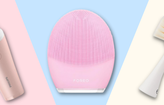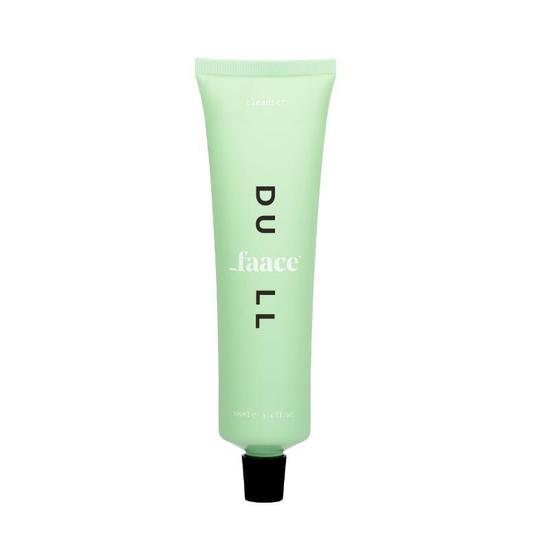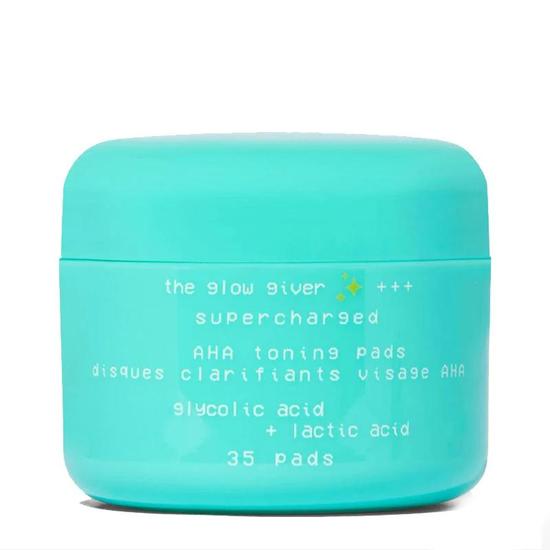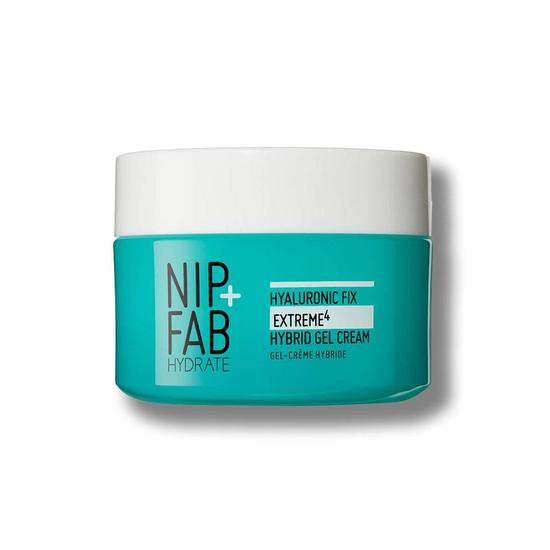
- Skin
- Hyaluronic Acid Glycolic Acid
Can You Use Hyaluronic Acid With Glycolic Acid?
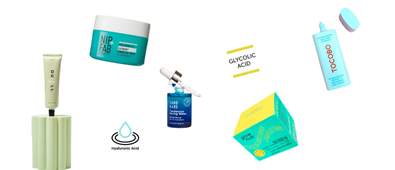
Glycolic acid and hyaluronic acid may sometimes sound like they do similar things, but they play very different roles in skincare. Glycolic acid is a powerful exfoliator, removing dead skin cells to reveal a smoother, brighter complexion. Hyaluronic acid, on the other hand, is a humectant that draws moisture into the skin and keeps it plump and hydrated.
Glycolic acid clears the way for better product absorption, and hyaluronic acid steps in to replenish moisture and reduce potential irritation. The result? Glowing, smooth, and deeply hydrated skin.
Can You Use Hyaluronic Acid With Glycolic Acid?
Yes — and this pairing is one of the smartest ways to exfoliate and hydrate without compromising too much on skin barrier health.
Glycolic acid is a chemical exfoliant that removes dead skin cells and speeds up cell turnover. Hyaluronic acid, on the other hand, is a deeply hydrating ingredient that draws water into the skin, helping to plump and soothe. Used together, they deliver smoother, more radiant skin with minimal irritation—especially when layered correctly.
While glycolic acid can sometimes dry or sensitise the skin, hyaluronic acid helps buffer those effects and leaves your complexion hydrated, comfortable, and balanced.
Why this combo works:
- Exfoliate + hydrate: Remove dead skin, then restore water content.
- Balance and comfort: HA reduces tightness and flaking caused by glycolic acid.
- Maximised absorption: Glycolic acid preps the skin for better uptake of HA.
Suitable for most skin types: Even beginners can benefit with the right layering.
👉 Already know the benefits of each ingredient?
Jump To Routine
What does glycolic acid do for your skin?
Glycolic acid is an alpha hydroxy acid (AHA) derived from sugarcane. It has the smallest molecular size among AHAs, which means it penetrates the skin easily and works efficiently. Its primary function is exfoliation—it dissolves the bonds between dead skin cells, allowing them to shed more easily and speeding up skin renewal.
Regular use of glycolic acid helps fade hyperpigmentation, reduce fine lines, clear congestion, and smooth texture. But because it is quite potent, it can sometimes cause irritation, flaking, or sensitivity—especially for those with dry or sensitive skin types.
Key benefits of glycolic acid:
- Exfoliates dead skin cells: Unclogs pores and smooths surface texture.
- Improves brightness: Reveals a more radiant, even skin tone.
- Fades pigmentation: Helps reduce sun spots, melasma, and acne scars.
- Boosts collagen production: Encourages firmer, more elastic skin.
- Improves absorption: Allows serums and moisturisers to penetrate better.
- Minimises fine lines: Softens the appearance of age-related texture changes.
Best for:
- Dull or uneven skin tone
- Rough texture and enlarged pores
- Pigmentation and sun damage
- Mature or acne-prone skin
Start with a low concentration (5–7%) if you’re new to glycolic acid and use it 2–3 times a week in the evening to avoid over-exfoliation.
What does hyaluronic acid do for your skin?
Hyaluronic acid (HA) is a naturally occurring sugar molecule found in the skin, joints, and connective tissues. In skincare, it functions as a moisture magnet—it can hold up to 1,000 times its weight in water, drawing hydration into the skin and keeping it there.
It’s incredibly gentle, non-comedogenic, and suitable for all skin types—including oily, dry, and sensitive. While hyaluronic acid doesn’t treat acne or pigmentation directly, it supports overall skin health by improving hydration, elasticity, and barrier function.
Key benefits of hyaluronic acid:
- Deeply hydrates: Pulls water into the skin to plump and moisturise.
- Improves skin texture: Makes skin feel softer, smoother, and more supple.
- Reduces appearance of fine lines: Hydration plumps the skin and smooths creases.
- Supports skin barrier: Helps prevent water loss and improves resilience.
- Soothes irritation: Calms redness and dryness from exfoliation or environmental stress.
- Enhances comfort: Combats tightness, especially after using strong actives.
Best for:
- Dehydrated or dry skin
- Sensitive or reactive skin
- Skin using exfoliants or retinoids
- All skin types as a hydrating step
Hyaluronic acid is most effective when applied to damp skin, followed by a moisturiser to lock in the hydration.
Comparing Hyaluronic Acid and Glycolic Acid Side-by-Side
| Benefit | Glycolic Acid | Hyaluronic Acid |
|---|---|---|
| Primary Function | Alpha hydroxy acid (AHA) that exfoliates the surface to reveal smoother, brighter skin | Powerful humectant that attracts and retains moisture for plumper, hydrated skin |
| Exfoliation Type | ✅ Surface exfoliation – removes dead skin cells | ❌ Non-exfoliating – purely hydrating |
| Improves Texture | ✅ Refines rough or uneven texture | ✅ Plumps and softens for a smoother feel |
| Brightens Dull Skin | ✅ Encourages radiant, even skin tone | ⚠️ Indirect effect – improves glow via hydration |
| Fades Hyperpigmentation | ✅ Helps fade dark spots and discolouration | ❌ No effect on pigmentation |
| Boosts Collagen & Firmness | ✅ Stimulates cell renewal for firmer appearance | ⚠️ Plumps via hydration but no collagen stimulation |
| Hydration & Barrier Support | ⚠️ Can dehydrate if not followed with moisturiser | ✅ Deeply hydrates and strengthens barrier |
| Reduces Fine Lines & Wrinkles | ✅ Softens lines by resurfacing skin | ✅ Plumps to minimise appearance of fine lines |
| Irritation Potential | ⚠️ Moderate – may cause tingling or dryness | ✅ None – extremely gentle and soothing |
| Suitable for Sensitive Skin | ⚠️ Start slow – low concentrations recommended | ✅ Excellent for all skin types, including sensitive |
| Best Time to Use | PM – exfoliate 2–3 nights per week | AM & PM – daily use is ideal |
How to safely combine glycolic acid and vitamin C
Step 1: Cleanse your skin
Use a gentle, non-stripping cleanser to remove dirt and prepare your skin.
Step 2: Apply hyaluronic acid
This may be in the form of a toner, serum, or pad. Apply it to clean, dry skin and wait a few minutes for it to absorb fully.
Step 3: Follow with glycolic acid
Apply HA to slightly damp skin if possible (or mist lightly before applying). This helps draw moisture into the skin more effectively.
Step 4: Seal with a moisturiser
Use a nourishing moisturiser to lock in hydration and protect your skin barrier.
Optional: Finish with SPF (if using in the morning)
However, glycolic acid is best used at night due to sun sensitivity.
Tips for combining glycolic acid and hyaluronic acid
- Use glycolic acid at night: Avoid sun sensitivity and support nighttime renewal.
- Hydrate before and after: You can mist your skin before applying HA and always seal it with moisturiser.
- Skip other actives: Avoid using retinol, AHAs or vitamin C in the same routine if you have sensitive skin, unless advised by a professional.
- Patch test new products: Especially glycolic acid, to avoid unexpected reactions.
- Start slow: Begin with glycolic acid 2–3 times a week and always follow with HA and a moisturiser.
FAQs
Can I use glycolic acid and hyaluronic acid in the same routine?
Yes. Apply glycolic acid first, let it absorb fully, then follow with hyaluronic acid to hydrate and soothe. Always finish with a moisturiser.
Should I use hyaluronic acid before or after glycolic acid?
After. Glycolic acid needs to go on clean, dry skin to exfoliate effectively. Once absorbed, follow with HA to replenish hydration.
Is this combination suitable for dry or sensitive skin?
Yes—but stick to a low concentration of glycolic acid and use it only 1–2 times a week to avoid irritation. Hyaluronic acid will help buffer the effects.
Can I use glycolic acid and hyaluronic acid every day?
You can use hyaluronic acid daily, even twice a day. Glycolic acid should be used 2–3 times a week for most people. Daily use may lead to over-exfoliation unless your skin is already tolerant.
Do I need to use a moisturiser after hyaluronic acid?
Yes. HA draws water into the skin but can evaporate if not sealed in. Always follow with a moisturiser to lock in hydration.
When using actives, sometimes timing is paramount: read up on When to Use Hyaluronic Acid Serum & Products and How to Use Hyaluronic Acid in Your Routine for the Best Results to make your HA work just that little bit harder.

Written by Maria Mukaranda
Maria’s background is rooted primarily in creative media and a love for all things written, expressed through experience both online and in print; for creative platforms spanning from music to fashion to beauty.
Top Posts


